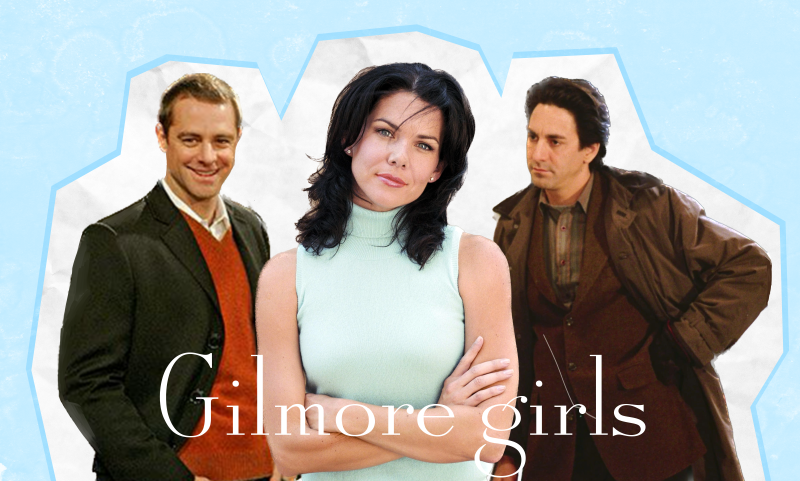I previously used Gilmore Girls as a prosperous ground to discuss love. Today’s article will step away from matters of the heart to consider the nuanced interplay of social dynamics and individual identity within the show’s enchanting world. One character stands as a remarkable bridge between two contrasting social strata.
With her wit and charm, Lorelai Gilmore fluidly navigates the disparate worlds of aristocratic privilege and middle-class Stars Hollow. But what underpins her unique ability to traverse these social landscapes so effortlessly?
To start, one can argue that Lorelai is just a fascinating person. It’s her nature, her essence — I agree to a degree. Yet, I believe that intellectual architecture, the interplay between different forms of capital, provides a better framework to delve into skills and values that help us become more socially successful. Lorelai is a compelling case study.
More specifically, I rely on French sociologist Pierre Bourdieu’s capital theory, which argues that different capitals owned by individuals can determine their positions in the social stratification structure, influencing the pattern of social behaviors. It doesn’t need to be physical capital, such as actual endowments. In fact, there are three forms of capital: economic (wealth), social (networks and relationships), and cultural (knowledge, educational degrees, etc.). Throughout their lives, a person never stops accumulating these different forms of capital.
Lorelai Gilmore, the only daughter of Emily and Richard Gilmore, embodies this theory in a compelling way. Pregnant at 16 and on a path that diverges from her affluent upbringing, she represents a dynamic character who straddles two distinct social classes.
She both know a lot about the world of wealth and affluence, but she embodies the American Dream, where, after having left the protective wing of her parents with not a penny to her name, she climbed the social stairs to the middle class, thanks to her effort and resilience.
A poignant example of this dynamic is a conversation between Lorelai and Emily:
Emily: Your father would have gotten him [the man that Lorelai got pregnant at 16] a job with his insurance business, and you two would be living a lovely life right now.
Lorelai: Christopher didn’t want to be in the insurance business, and I am living a lovely life right now.
Emily: Oh yeah, far away from us.
Lorelai: Oh, here we go again.
Emily: You took that girl and completely shut us out of your life!
Lorelai: You wanted to control me.
Emily: You were still a child!
Lorelai: No, I stopped being a child the minute the strip turned pink, okay? I had to figure out a way to live. I found a good job.
Emily: As a maid! With all your brains and talent!
Lorelai: I worked my way up. I run the place now!
In this exchange, we see Lorelai’s negotiation between the worlds of her upbringing and her self-made life.
Gilmore Girls offers numerous examples where Lorelai utilizes her unique mix of capital. Her ability to organize community events, successfully manage an inn and interact with the elite and the townspeople showcases her adeptness in different social situations. This blend not only highlights her social mobility but also her role as a mediator between different social classes.
In fact, Lorelai’s cultural capital, acquired through her upbringing, allows her to navigate the elite world of her parents. She knows the codes and the right way to do things there. However, it’s her social capital, forged through relationships in Stars Hollow and her economic capital, built through her career, that enable her to bridge these two worlds and make them see each other.
Lorelai does this not only in terms of physical encounters, like when Luke meets her parents or her parents come to Stars Hollow, but also through linguistics — in the way she uses “inappropriate” with her parents and holds her body in a certain way, called hexis.
For instance, in Season 2 Episode 10 “The Bracebridge Dinner,” a snowstorm traps Emily and Richard at the Independence Inn’s festive event. Here, Lorelai gracefully manages the situation, showcasing her ability to blend the formalities familiar to her parents with the casual, communal atmosphere of Stars Hollow.
Nevertheless, there’s a palpable sense of Emily and Richard being mere observers rather than active participants in the town’s culture. Such instances suggest that the interactions between the two worlds — the Gilmores and the Stars Hollow community — are more about glimpsing into each other’s lives rather than fully embracing or understanding them.
Lorelai’s unique position facilitates these meetings, but they often serve to highlight the differences and inherent contradictions between the two worlds rather than resolve them.
Furthermore, Lorelai’s journey towards independence is intermittently marked by her reliance on her parents’ wealth, notably for Rory’s education at Chilton and her aspiration to open her own inn.
This dynamic reflects the intricacies and contradictions of Lorelai’s character, caught between her desire for self-sufficiency and the occasional necessity to tap into her family’s economic and cultural capital from her upbringing to navigate various social situations.
She also takes her time to fully recognize her feelings for Luke – before going all in with him, she goes out with men who belong to her parents’ world first. Maybe, at some unconscious level, she is still struggling with the education and values she internalized as a child. In a genius way, through Lorelai, the series poignantly illustrates the challenges of social mobility and the nuanced interplay between different social strata.
